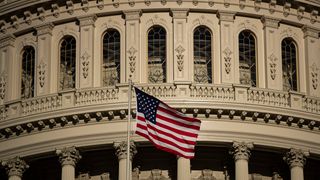Just days before Americans head to the polls in what could be the closest US presidential race in decades, all eyes are fixed on whether Vice President Kamala Harris or former president Donald Trump will become the next occupant of the White House. Yet, while the presidential race attracts the most attention, the 5 November election will also determine the future of the US Congress. The members elected to the US House of Representatives and Senate in 2025 will control the purse of the US Government and either enable or obstruct the policy agenda of the next president. The results of a handful of races will shape US engagement with the Indo-Pacific, and with Australia, for the years to come — until the next midterm elections in November 2026.
Current state of play
A total of 469 seats in Congress will be contested on 5 November. This includes all 435 House seats and 34 Senate seats – one-third of the upper chamber. Members of the House of Representatives are elected for two-year terms, while US Senators, like their Australian counterparts, are elected for six-year terms. Control of Congress is currently split, with Republicans maintaining a narrow majority in the House (220–212), while Democrats (and independents who caucus with them) control the Senate by a slim margin (51–49).
Although all 435 House races will be decided this election, less than 10% of them are considered competitive. In part because of partisan redistricting, or ‘gerrymandering’, just 25 contests this year are seen as genuine tossups between either party. With numerous Republican incumbents in jeopardy and Democrats needing just a four-seat net change in their favour to take control of the chamber, the Democratic Party is marginally favoured to win the House. Democrats hope to edge out Republican competitors in favourable districts in New York and California, while Republicans are targeting Democrat-held districts spread across the country that voted for Trump in 2020.
In the Senate, Republicans are heavily favoured to win the West Virginia seat currently held by retiring Democrat Joe Manchin and they comfortably lead Montana Democratic Senator Jon Tester in polls. A handful of other Democrat-held seats in Ohio, Pennsylvania, Michigan and Wisconsin are considered toss-ups. If Trump wins the presidency, Republican victory in West Virginia alone will be enough to take control of the Senate, given that a Vice President JD Vance would be handed a casting vote in the chamber. By contrast, no Republican-held seats are seen as easily winnable for Democrats. While Texas Senator Ted Cruz and Florida Senator Rick Scott are considered to be the most vulnerable, both still lead their Democratic challengers by over four points in polling averages. Republicans are, therefore, optimistic about reclaiming the Senate majority they lost in 2020.
If both the House and Senate flip, it will mark the first time in US history that both chambers have changed hands in opposite directions in the same election.
On average, US Congress is significantly less representative than the Australian Parliament. Despite the US population tripling over the last century, the US House has remained capped at 435 members since 1929. Today’s ratio of population to representative is the highest in US history, and by far the highest among OECD nations. In 2020, each voting member of the US House of Representatives represented 760,000 Americans on average, compared to just under 180,000 Australians per member of the Australian House of Representatives. This lack of representation has contributed to the deep unpopularity of Congress among the US public.
Why Congress matters
Domestic agenda
The support of Congress is, in many respects, essential to delivering any president’s domestic policy plans. The House of Representatives is the central lawmaking body for the United States, with the power to draft legislation and impeach federal officials – including the president. In the Senate, a majority of 60 votes is effectively required to approve most legislation and presidential budget proposals. Senators can also hold up the president’s agenda by failing to confirm presidential appointees. In the current Congress, a single member of the senate, Senator Tommy Tuberville (R-AL), effectively stalled more than 400 Biden administration nominations. Hold-ups in the confirmation process affect both domestic and foreign policy.
It is likely that the successful presidential candidate this cycle will be the first since 1988 to enter office without their party controlling both chambers of Congress. This would significantly constrain the ability of either Harris or Trump to implement their domestic agenda in the crucial early years of their term before the 2026 midterm elections.
It is likely that the successful presidential candidate this cycle will be the first since 1988 to enter office without their party controlling both chambers of Congress.
In a split Congress, key planks of the Democratic and Republican party platforms, such as legislating abortion rights or cutting funding to schools pushing “inappropriate” political content, would be all but certain to fail. Intractable debates would continue over US debt ceiling negotiations and overseas funding for countries like Ukraine.
Foreign policy
In recent decades, presidents have increasingly exerted unilateral power over foreign policy. Still, Congress leverages some exclusive foreign policy powers that shape US global engagement. For instance, Congress exercises final authority over international treaty agreements and budget authorisations and appropriations. This affords elected representatives in Congress power over US Indo-Pacific partnerships, determining everything from foreign military sales to the resourcing of diplomatic outreach. Though the president of the day charts the course for US foreign policy, it is Congress that is tasked with implementing and funding that agenda.
With lawmakers delaying the passage of the FY2025 budget authorisation until the new year, the next Congress will have responsibility for setting annual defence and diplomatic spending. The makeup of the 119th Congress will be particularly significant in foreign policy areas such as the provision of military aid to Ukraine, the implementation of AUKUS, and the trajectory of US China policy.
Competing funding priorities such as domestic hurricane recovery and the Middle East will likely further crowd out formerly bipartisan efforts to support Ukraine after the election. Support among Republican lawmakers for additional aid to Ukraine has continued to decline since Republican Mike Johnson’s speakership was put in jeopardy over the issue earlier this year. Recent acrimony between Republican members and Ukrainian officials over criticism of Trump is further indication that aid for Ukraine may hang in the balance of the House election outcome.
For Australia, the current Congress has also legislated decisions key to the delivery of the AUKUS partnership. Key congressional actions have included the passage of transformative export controls in the 2024 National Defense Authorization Act and a surge in funding to the US submarine industrial base. Congressional oversight will continue to matter for the implementation of the AUKUS pact, as the efficacy of both regulatory reforms and industrial base investments are tested.
Supreme Court
Appointments of Supreme Court justices require simple majority support in the Senate. Presidential candidates often use the possibility of Supreme Court appointments as an electoral tool, and 2024 has been no different. Trump, in particular, has emphasised the issue of court appointments during his campaign and some in the Democratic Party are openly considering increasing the size of the Supreme Court. Republican Senate Majority Leader Mitch McConnell successfully obstructed President Barack Obama’s appointment of Merrick Garland to the court in 2016 and confirmed Trump nominee Amy Coney Barrett to the court just a week before the 2020 election – both were deeply controversial election issues.
The next president may well appoint one or two Supreme Court justices while in office, considering justices Clarence Thomas and Samuel Alito will be 80 and 78 respectively by the end of the next presidential term. Still, it is possible that there will be no retirements or deaths, and the next president could have the fewest vacant federal judgeships to fill in decades due to both the Trump and Biden administrations prioritising federal appointments.
Races to watch
Among the hundreds of congressional races playing out on election day, just a handful will prove pivotal for deciding control of both chambers of Congress. But 5 November will also determine the makeup and leadership of key congressional committees with oversight over domestic and foreign policy priorities and legislation. Front of mind for many is that a new Republican leader in the Senate must be selected to replace retiring Senator Mitch McConnell. While these decisions will affect Congress’ long-term direction, some of the key races to watch on election day are listed below.
Senate
Montana
The candidates | Three-term Senator Jon Tester, the most electorally-vulnerable Democrat in the Senate, faces an uphill battle for re-election against Republican businessman Tim Sheehy.
Why it matters | Montana voted for Trump in 2016 and 2020 and is all but certain to do so again in 2024, imperilling Tester’s chances of holding onto a rare Democrat seat in the deep-red state. Tester now trails Sheehy by over six points in polling averages, threatening Democratic control of the Senate. The race will be a key indication of whether moderate Democrats can still win races in rural Trump-voting jurisdictions.
Ohio
The candidates | Incumbent Democratic Senator Sherrod Brown is running neck-and-neck in the polls against Republican businessman Bernie Moreno.
Why it matters | Like Tester in Montana, Brown is a rare Democratic incumbent in a state which Trump has won twice. While Ohio was once a bellwether which former president Barack Obama won in 2008 and 2012, it has since come to reflect Trump’s appeal in industrial Rust Belt states. Ohio is now dominated by Republicans in state politics and is home to Republican vice presidential nominee JD Vance, though Brown holds a razor-thin lead in polling.
Texas
The candidates | Having overcome a strong challenge from Democrat Beto O’Rourke in 2018, Republican Senator Ted Cruz faces Democratic Congressman Colin Allred in another unexpectedly close race.
Why it matters | This cycle, Texas is one of the few competitive races for Democrats that could threaten Republican Senate control. If Tester is defeated in Montana or Brown in Ohio, and Republicans win West Virginia’s open race, an upset victory for Allred in Texas could allow Democrats to still hang onto a Senate majority if Harris wins the presidency. While not initially expected to be close, the race has tightened in the final week of campaigning, with Cruz now holding a favourable but slim lead in the polls.
House of Representatives
New York's 4th District
The candidates | Democrat Laura Gillen hopes to unseat Republican Congressman Anthony D’Esposito in the most Democratic-leaning House district held by a Republican.
Why it matters | New York’s 4th District, along with five others in the state, is key to Democratic hopes of taking control of the lower chamber. Biden won the district handily in 2020, before Republican D’Esposito scored an upset victory in the 2022 midterms. Gillen and Democrat-backed political action committees have spent millions on the race and top Congressional Democrats including Minority Leader Hakeem Jeffries have visited the Long Island district in the hopes of reclaiming the seat.
California's 27th District
The candidates | The race between Republican incumbent Congressman Mike Garcia and Democratic challenger George Whitesides is one of a handful of California races that could be pivotal for control of the House.
Why it matters | Like Democratic targets in New York, this district north of Los Angeles is one of a handful in California that Democrats could use to win a House majority. The swing district voted for Biden in 2020 when Garcia won the seat by just 333 votes out of 339,000 cast, but he won it again by a margin of over 12,000 votes in the 2022 midterms. Democrats hope that increased turnout in 2024 will allow them to reclaim the seat, and the results could signal the extent to which having Trump at the top of the ballot influences down-ballot Republican support in blue states.
North Carolina's 1st District
The candidates | Incumbent Democratic Congressman Don Davis faces Republican veteran Laurie Buckhout in the state’s only toss-up race.
Why it matters | In 2020, Trump’s tightest margin of victory was in North Carolina and the state is again a key battleground in 2024. Following a controversial redistricting by state Republicans, Davis faces a difficult re-election bid and is one of the most electorally-vulnerable House Democrats this cycle. A loss for Davis could see the election of the district’s first non-Black representative since the 1990s and the first Republican since 1883 – and boost Republican chances of holding onto a House majority.











